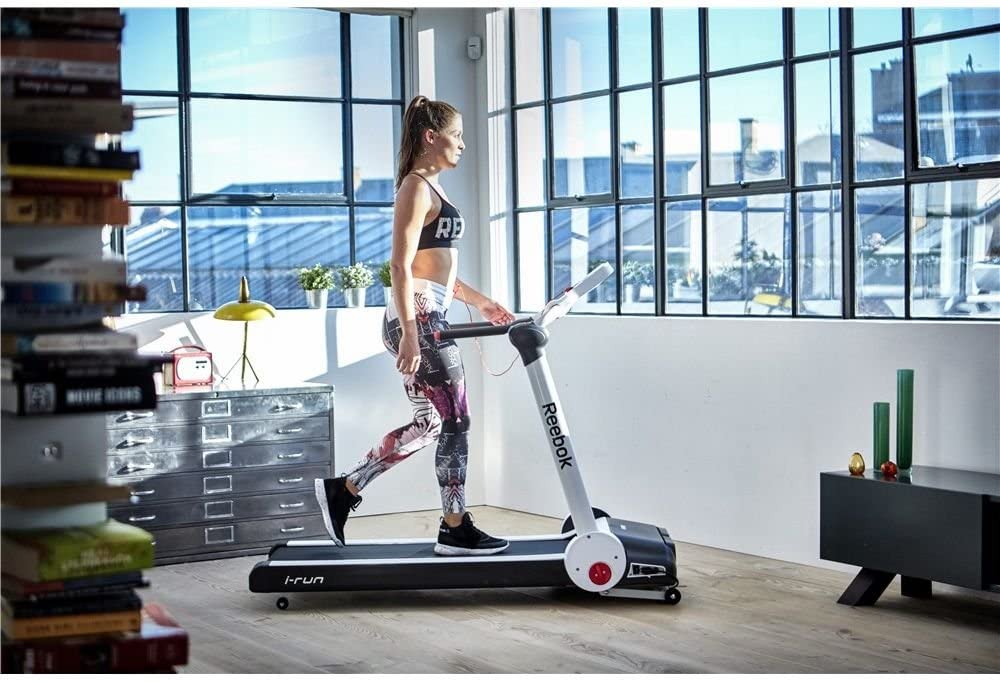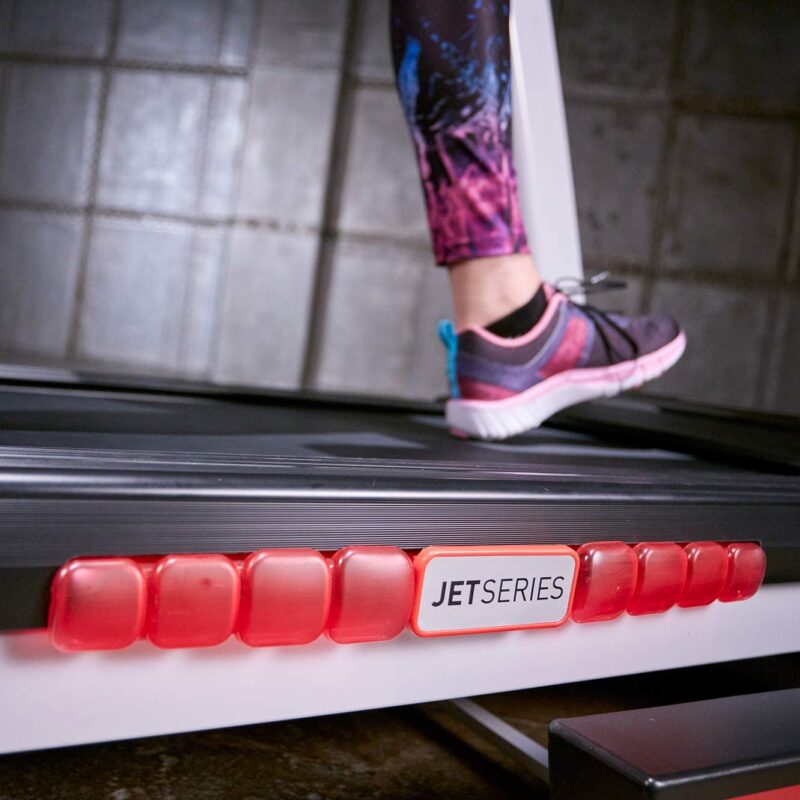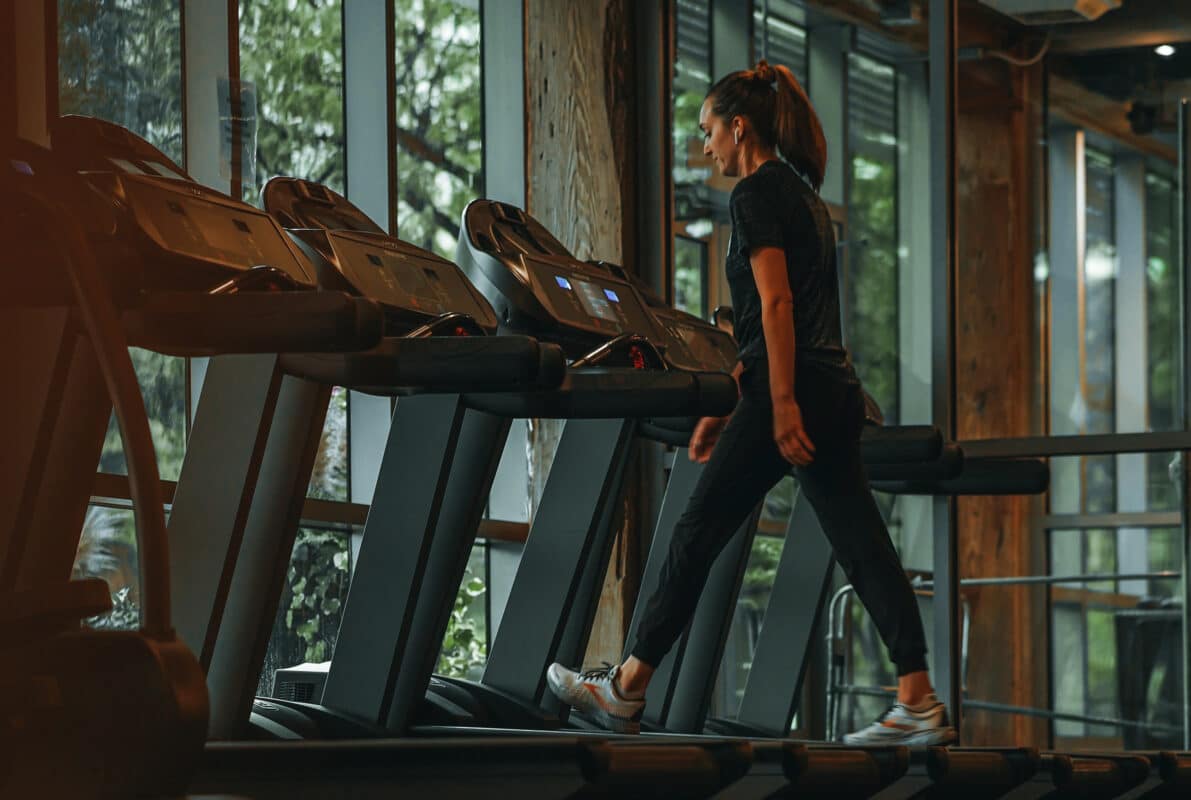Walking is an effective cardiovascular workout; it has fantastic benefits in helping you lose weight and build your lower muscles. According to research, an average 80 kg man walking one kilometer at an average walking speed would burn up to 76 calories. The calorie burn can be improved by walking briskly or at an incline. However, it can be difficult to comprehend what the 76 calories mean.


How much does it take to burn a pound?
If we talk about burning a pound; experts suggest that one pound is approximately 3500 calories, which means that you would need to walk about 46 kilometers at an average pace to burn a pound. In terms of food, a cup of blueberries weighing about a 100grams would have 86 calories, while a hard-boiled egg would be a little less at 80 kcal.
You might now be thinking that walking 1 km barely burns enough for a meal, and it’s demotivating.
Nevertheless, it gets better with time. The latest research has shown that brisk walking can burn more than 100 calories for 1 km. If you extend your run to about 3 km, the average calories burned per kilometer will increase to more than 150 kcal.
The variation occurs as your body’s heart rate will initially be low when you begin walking. However, as your walk extends to a longer time, your heart rate stays high for an extended period. It boosts your metabolism and exerts more sweat, resulting in higher fat burn.
Most people aren’t concerned about how many calories would be burned by walking a kilometer. They are more encouraged to know how much they can burn by walking or running for a limited time. If you are one of them, it’s your lucky day.
In this blog, we are going to answer ‘how long does it take to walk 1 km’ and how you can maximize your calories burn without working out 24/7. Let’s go!
Contents
- How long does it take to walk 1 km?
- Check out some of the best:
- 1. Fitbit Versa 3 – read more
- 2. 3D Active 3DFitBud – read more
- 3. iGANK Simple Walking Pedometer – read more
- 4. Garmin Forerunner 55 – read more
- 5. Realalt 3D Trisport Walking Pedometer – read more
- 6. Garmin Vivofit 4 – read more
- 7. Fitbit Inspire 2 – read more
- 8. Garmin Vivosmart 4 Fitness Tracker – read more
- 9. Broadsheet Pedometer – read more
- 10. Polar Ignite Advanced Waterproof Fitness Watch – read more
- Conclusion
- FAQs
How long does it take to walk 1 km?
If you are looking to get started with an exercise routine, it is essential to set up a plan. Your plan should determine your daily fitness goals, current fitness level, and free time.
For all beginners, my advice is to ensure that you don’t overdo it in your initial days. There are countless examples of starters that couldn’t achieve their long-run dreams because they were unable to commit time regularly.
The purpose of the blog is to determine the timing schedule your workout would require. The time would differ depending on your walking pace. If you walk faster, you would be able to cover your distance in less time, but it would mean that your workout is shortened.
In the latter section, we will be talking about how long it would take you to walk one kilometer at a different walking pace.
For slow-walkers
It is quite understandable that if you walk comfortably, it would take a longer time for you to cover a 1-kilometer distance. If you are walking at a slower speed of 2 kph, you will cover 1 km in about 30 mins, but 2 kph is a fairly low speed, and it doesn’t take this long.
An average slow walker would have a walking speed of about 4 kph, which means that your kilometer would be covered within 15 mins.
Slow walking on a treadmill
Most treadmills aren’t calibrated to kilometer per hour speed settings; they usually deal with miles as their unit. A mile is about 0.62 of a kilometer, and it is obvious that speed in miles is slightly higher than the same speed in kilometers. If you are walking on a treadmill but don’t want to go beyond a slow walking speed, a 3 mph is a reasonable pace to get started.
It is often tiring to achieve 4 km by working out for an hour. Figuring out excess hours isn’t always easy; you would be tempted to switch to other exercises. I would instead recommend changing your incline levels. You can achieve the same calorie burn by working out for a lesser time by setting up a higher incline level.
Higher incline levels would allow you to burn your desired fat without working out for longer intervals at a walking pace. You would be able to shorten your walking time and make the most of your workout.
For moderate walkers
Most often, young individuals don’t always like walking slowly, mainly because they are in a hurry and an extended walking time is no attraction for them. They would usually take about 10 minutes to cover 1 km.
If you are walking on a track, your speed will change throughout your workout. In the initial phase, it would be like brisk walking while the speed gradually decreases over time as the body heats up.
Moderate Walking on a treadmill
Walking on a treadmill is reasonably different. For walkers, setting a pace of around 4-5 mph, they would be able to cover the distance of a kilometer within 10 minutes. However, the pace isn’t always ideal if you are looking to burn calories. It is often advised that you try lateral walking if you like to keep the pace low.
There is a separate lateral workout for high-intensity interval training; we have discussed it in a previous blog.
Moderate walking practice can be great to help you train for a half marathon. When you practice at a moderate or fast pace, your body gets trained to work out for longer intervals. It results in an easier half marathon run.
For fast walkers or runners
Walking isn’t always an attractive choice when we compare its fat burn ratios to other cardiovascular exercises. Beginners are looking for good results in less time. Hence, a better alternative is to walk at a fast pace or jog. Jogging is an effective exercise that can help in attaining maximum fat burn in less time.
Jogging utilizes multiple muscles at the same time, which ensures that all your body is engaged in the workout. A 1 km session of jogging on a track would take about 6-7 minutes.
Experts suggest that walking at a fast pace would maximize your heart performance which improves blood flow and helps in improving your fitness level. Peer-reviewed studies show that running at 7 mph for 15 minutes would burn the same calories as walking at 3mph for 30 minutes.
However, if you have heart disease or chronic diseases, you must seek advice from a professional medical consultant before getting started.
Fast walking or jogging on a treadmill
Running on a track isn’t always advisable for people aged over 45; it is mainly because a track is made of cement bricks that exert a strengthened impact on your ankle, knee, and joints, resulting in joint and bone pain. Hence, it is better to get a motorized treadmill if you plan to burn your excess calories by running regularly.
The deep cushioning and latest programming features allow you to run for longer intervals without getting tired eyes and body. Additionally, a home treadmill allows you to practice your workout in any weather condition, including deep snow or thunderstorms.
For running on a treadmill, you should start with a 5 min workout as it will get your body heated up, and your heart rate won’t suddenly rise. Then, gradually increase your speed after every minute. Take it to about 12 mph, and then decrease it.
There are various forms of high-intensity workouts that you can practice. If you follow a reasonable HIIT workout routine, it will take about 5 minutes to complete a kilometer.
To help you out further with these statistics it is recommended that you look to invest in a suitable device to record your daily activity whilst tracking both your steps and your heart rate. This will enable you to see monitor your progression and achieve the targets you set.
Check out some of the best:
1. Fitbit Versa 3 – read more
2. 3D Active 3DFitBud – read more
3. iGANK Simple Walking Pedometer – read more
4. Garmin Forerunner 55 – read more
5. Realalt 3D Trisport Walking Pedometer – read more
6. Garmin Vivofit 4 – read more
7. Fitbit Inspire 2 – read more
8. Garmin Vivosmart 4 Fitness Tracker – read more
9. Broadsheet Pedometer – read more
10. Polar Ignite Advanced Waterproof Fitness Watch – read more
Conclusion
We have come to the end of the blog. I hope it helped you learn more regarding your workout timings and maximizing your calorie burn. It is essential that your exercise routine isn’t in impulses; instead, it should be in a regular flow.
A cheat day in a week isn’t wrong, but you should commit to burning part of what you eat. Then, achieving the desired results would be easier than ever.


FAQs
Does a walk impact my lower body?
Walking to tone your lower muscles is a step in the right direction, but a walk can’t simply have a measurable impact. Your muscles don’t face recognizable strain during a walk, and it is merely heating them. The muscle growth may be different for a fast walker.
What is the most important thing in walking?
The most essential thing to get the best results from your exercise is your commitment. If you are determined to bring a change and commit to not giving up, you will never face failure. Results are slow but rise exponentially. You should make sure that you are working out for at least half an hour each day. To achieve your dreams, it is important to start walking today!
Like cheat days, a person can also commit to overload days. Set a day of the week where you plan to work out more than regular days. I would suggest you double the regular timings, but it isn’t necessary and the endurance may vary for each person.